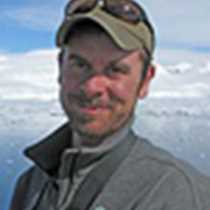Fox Creek / Inian Islands
I think it is safe to say that a 7 day trip is going well when at the end of day four people are asking, “Are things just going to just keep getting better and better?” Well, if you ask this Naturalist, the answer is yes! We are in Alaska after all, and I think there was little doubt among the staff going into the day that it would be anything but spectacular. The skies could have thrown rain, snow or sleet at us and it would have been hard to complain- much less going into it with blue skies and sunshine!
We dropped anchor this morning at the northern end of Chichagof Island which straddles the open Pacific, the northwestern corner of the inside passage and the southern end of Glacier Bay National Park. Centered in this geographic triangle we set our sights for our northern Chichagof landing at Fox Creek. Renowned for its bear trails, bear scratching posts and habitual bear foot paths we ventured inland with an excitement that was evenly tempered by caution. What we found was a forest littered with wildflowers, parasitic plants that feed off the roots of Sitka alder shrubs, trees with scratch marks 8 feet from the base of their host tree where brown bears have been sharpening their claws for years and habitual bear foot prints where individuals have been stepping time after time en route to their favorite scratching post. While the hikers were exploring the understory for signs of bear and other life forms groups of kayakers were busy circumnavigating a small forested outcropping named Shaw Island. They were in search for anything of interest but found more than they had expected when numerous humpback whales surfaced within meters of their kayaks.
This whale karma would continue throughout the day as we switched locations around noon so National Geographic Sea Bird could reposition north and west to a group of islands called the Inians. This spot holds a special place in the hearts of Lindblad Naturalists near and far for the rich diversity of life that it fosters. This abundance is a product of the open Pacific Ocean meeting a group of small islands and subsequently channeling all of that water through a narrow opening four times a day during the two high and low tides. With that tidal flow of water follows huge amounts of planktonic organisms (drifters) which are funneled through in such abundance that other animals have made their summer homes smack dab in the middle of these pinch-points. These animals include Steller sea lions (the largest representative of the eared seal family) black-legged kittiwakes, tufted puffins, pelagic cormorants, etc, etc, etc. All of these species can be found nesting or wallowing on the islands and cliff sides adjacent to the Pacific while the migrants (such as humpback whales) ply the waters when the tidal flow is strong. This afternoon was one of those days when nearly a dozen humpback whales were busy feeding near, and nearly under, our Zodiacs. All we had to do was sit in one location as these hungry behemoths lunged for schools of fish and krill all around us. I don’t recall one placid face as the Zodiacs returned to National Geographic Sea Bird this afternoon. All were covered with smiles and awe!
Now, to answer the question, “Are things just going to just keep getting better and better?” I think the spectacle that is Glacier Bay National Park will have a thing or two to say about that tomorrow!




